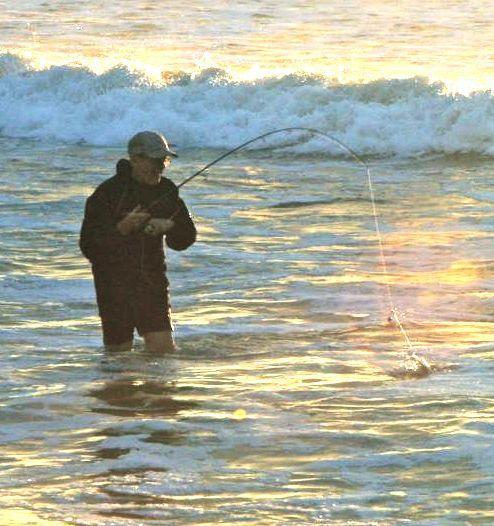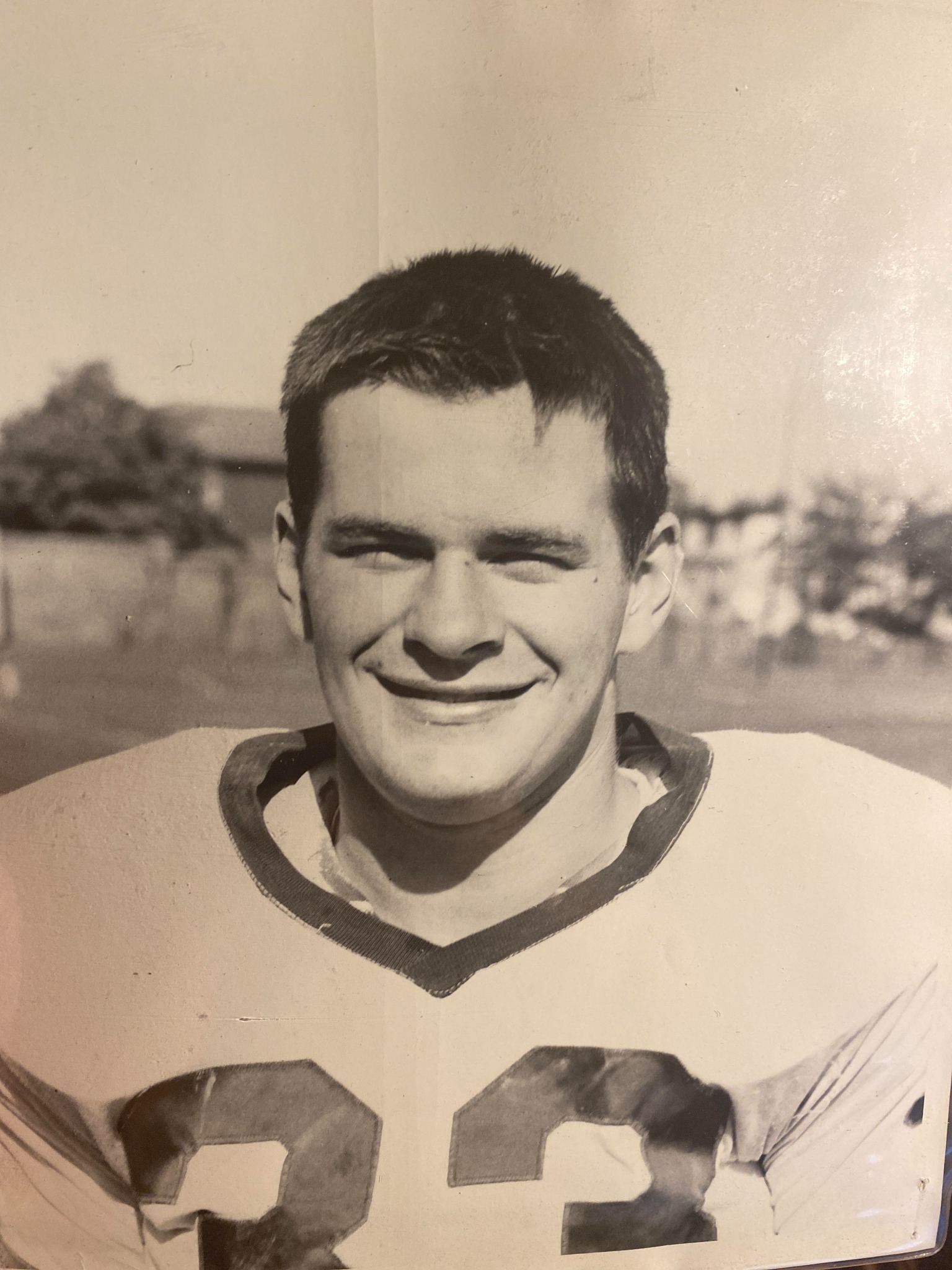The towering neon lit monoliths materialized out of the fog and mist before first light as I drove along the causeways through the marshland connecting the mainland with the barrier beaches. Later this day, other sojourners would see egrets, herons and killdeers wading, and watermen crabbing in the tidal creeks along the bridges here. But in the dim light of false dawn, obscured now by the swirling mist on this portion of the Forsythe National Wildlife Refuge, those iconic Jersey shore sights were but spectres. Glowing spheres of lightning still materialized sporadically in the eastern sky, untold miles out over the Atlantic. Lacking access to oracles or seers along the Atlantic City Expressway at five in the morning, I had turned to the meteorologists and an old salt’s fishing report on the radio. Neither NOAA nor Captain Clam’s barometer on the side of his cedarshingled tackle shack offered a definitive enough forecast for my purposes. So I proceeded, as we all must do at some point in our lives, on faith and hope alone. In this instance, faith in my ability to eventually scramble out of the littoral zone across the beach and over the dunes before the storm was upon me. And of course, the sincere hope that it wouldn’t come to that.
Barrier islands are best understood as permanent dry sand bars, running parallel to the coast, offering a buffer to the mainland from the hydrodynamics of the sea. They change in length and width at the whim of the sea over time, and cuts and inlets appear and disappear, as well as a few of the smaller islands themselves. Most famous along my stretch of the Jersey shore is (was) Tucker’s Island in Little Egg Harbor Inlet. Here a small community of homes, subsistence gardens, and even a lighthouse once flourished. Time and tides eventually eroded the isle until by my first encounters with it in the early 1950’s it was merely a large sand bar, submerged at high tide. We would drift for fluke through what once were kitchens and bedrooms, and dig clams in the path of the long gone lighthouse’s beacon. Neither the Corp of Engineers or the oceanographers can long halt the natural migrations of sand, land and life along the eastern seaboard, especially exacerbated today as it is by global warming.
Arriving where I did in on the barrier island, which contains the communities of Atlantic City, Ventnor, Margate and Longport, there were nearly fifteen miles of beachfront and an ocean inlet to the north and south. It is always tempting to stop right there in Atlantic City to fish, and I often succumb to the lure of fishing here. Partly because I love fishing the rocks along the Absecon Inlet, an area I call the “Monopoly Board”. Many of the streets you drive along to the inlet, are the streets named on the board of a Monopoly Game. If you’ve ever taken a ride on the “Reading Railroad”, or passed “Go” and collected $200.00 dollars, or cashed in your houses for a hotel, you might appreciate the pleasant weirdness of fishing here. But also partly because one night nearly forty years ago in a churning ‘nor’easter, Al McReynolds caught the world’s record striped bass. It was caught just a few blocks from his home, from the ocean jetty at the end of Vermont Avenue, another one of the Monopoly roads. Lore and history enough to cause an angler to dally, but not on this morning.
I had decided to head north, weaving between the seemingly Blade Runner inspired architecture of yet more casinos, traveling on a maze of concrete ribbons along the overpasses and underpasses to a different island. Crossing over the Absecon Inlet Bridge onto Brigantine Island, with it’s additional six miles of sandy ocean beach, it is quite a different world. Brigantine is positively quaint in comparison to the “Las Vegas of the East”, that is Atlantic City (Although AC and it’s glitz far predates Vegas). Additionally about a third of the island is comprised of a completely undeveloped portion of the aforementioned Forsythe National Wildlife Management Area. I drove along the deserted beach road to the point I had chosen to fish, about three quarter ways up beach. A few zombie-like gulls drank from the puddled rainwater, occasionally wheeling aloft and heading back over the dunes as I slowly motored by.
I was ahead of the tide stage that I wanted to fish, affording me the pleasure of unhurried observation as the beach began to reveal itself this day. There is always life on the beach, and in the ocean twenty four hours a day, but often it is much easier to see in the light of day. And in the muted glow on a misty morning such as this, life is never more beautiful, from the dune grasses to the foamy wrack ln the littoral zone, to the flash of silver scales of predator and prey in the breaking waves.
After assembling my tackle and pulling on my chest waders, I ambled along the narrow sandy path over the dunes, the sound of the crashing surf grew stronger now, less than two hours before full flood. By the time I arrived in the wash to survey the cuts and sloughs that the breaking waves revealed, the boom of the waves crashing could be felt like the pounding of a bass drum at a Fourth of July parade. A few seabirds were still bobbing on the water, but many more hovered above occasionally diving, searching for breakfast, as were the pod of bottlenose dolphin that passed perhaps a quarter of a mile off the beach, heading south. I remembered the pictures of the humpback whale that had been feeding on bunker (menhaden) two days previous, along the same vector as the dolphins this morning. The sea was returning to me as surely as I was to it. All it took this particular morning to be part of this collision of world’s was to be there, rod in hand. I fumbled a bit with excitement as I tipped my jig with an artificial crab, “sweetening it” as the saying goes. I waded thigh deep into the first trough and cast seaward beyond the first line of breakers.
On that initial cast, the swell nearly rose up to the tops of my waders, and I stayed dry by the grace of the surf belt tightly cinched around my waterproof over jacket. The first cast also provided my first fish, as after a turn or two of the reel handle a foot long northern kingfish (Menticirrhus saxatilis) took hold of my offering, and I quickly countered it’s spirited resistance and led it through the suds to be gently released. Another dozen of similar size and several Norfolk spot (Leiostomus xanthurus) and a small but beautifully hued weakfish (Cynoscion regalis) came to hand before the tide crested. The fishing slowed and the surf grew, both beating me gently into submission. I reeled in one last time, exited the water and settled down into the sand, roughly two hours from when I entered it, a good morning by any measure.
Drying off my goggles with my omnipresent bandana, I took a swig of water and reflected on my morning. The possible storms that had concerned me earlier had stayed offshore and moved further to sea. Good luck for me and my kind along the surfline, less so for mariners on commercial boats or sport fishermen out on the offshore grounds. They would make good use of their slickers, oilskins and neoprene today. The beach was sparsely populated by other anglers, most probably choosing to concede the early tide to the weather, and fish later. There was only one rod in sight before the beach hooked to the north, and a half dozen or so strung along the beach to the south against the backdrop of the cityscape behind the world’s most famous boardwalk. The seabirds had also made themselves scarce, replaced by a few flocks of scurrying sanderlings and pipers, and their human counterparts, the beachcombers. I don’t know how long I sat, undisturbed watching the waves crash. Each set of breakers looking and sounding that special way they do when this tidal stage and hour coincide. And most particularly after a successful foray amidst them, like the one I’d just enjoyed. Any more right now would somehow be less. A lone brown pelican slowly, prehistorically, appeared, passing over the breakers heading elsewhere. I rose from the sand, gathered my gear, and followed suit, in no particular hurry.



